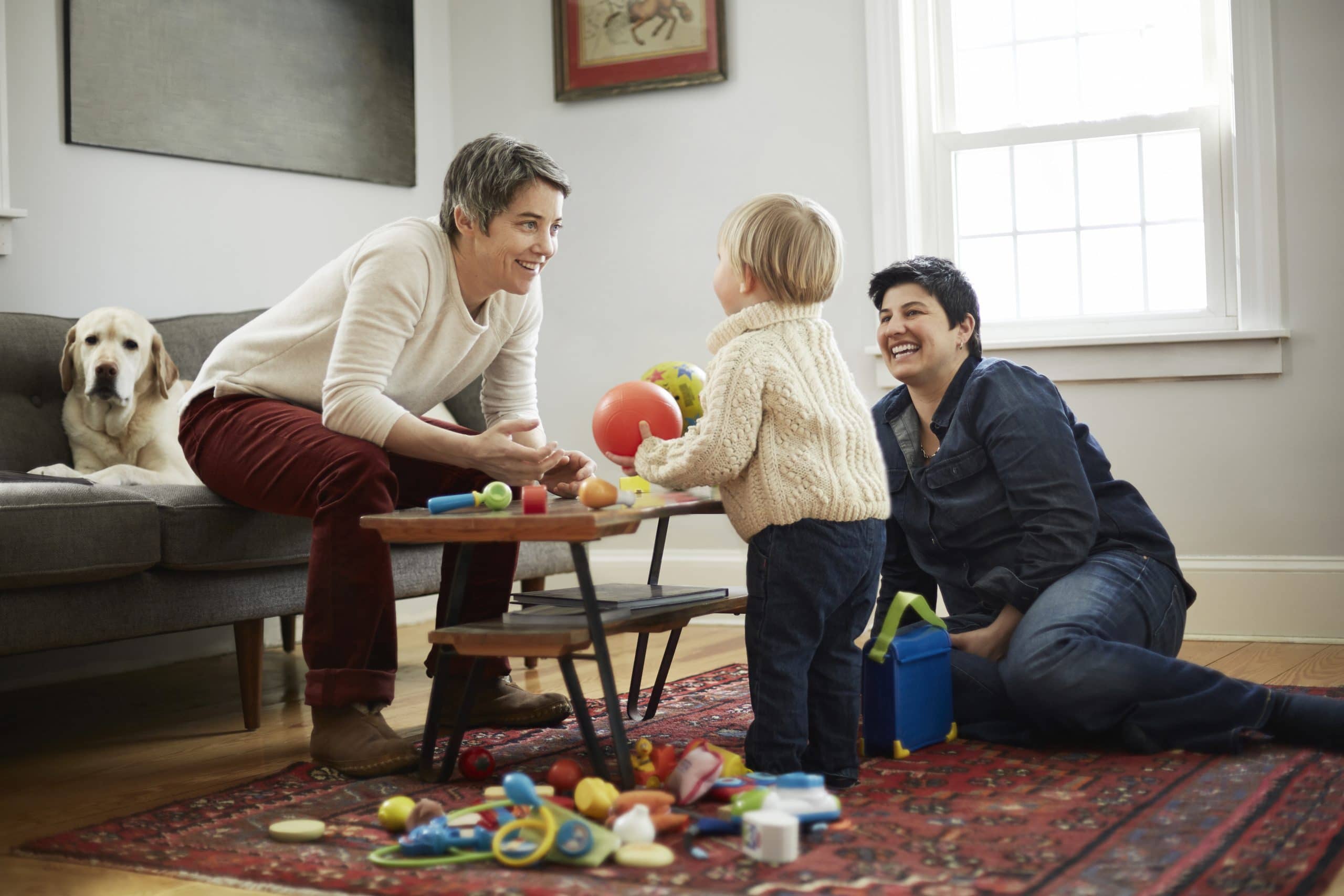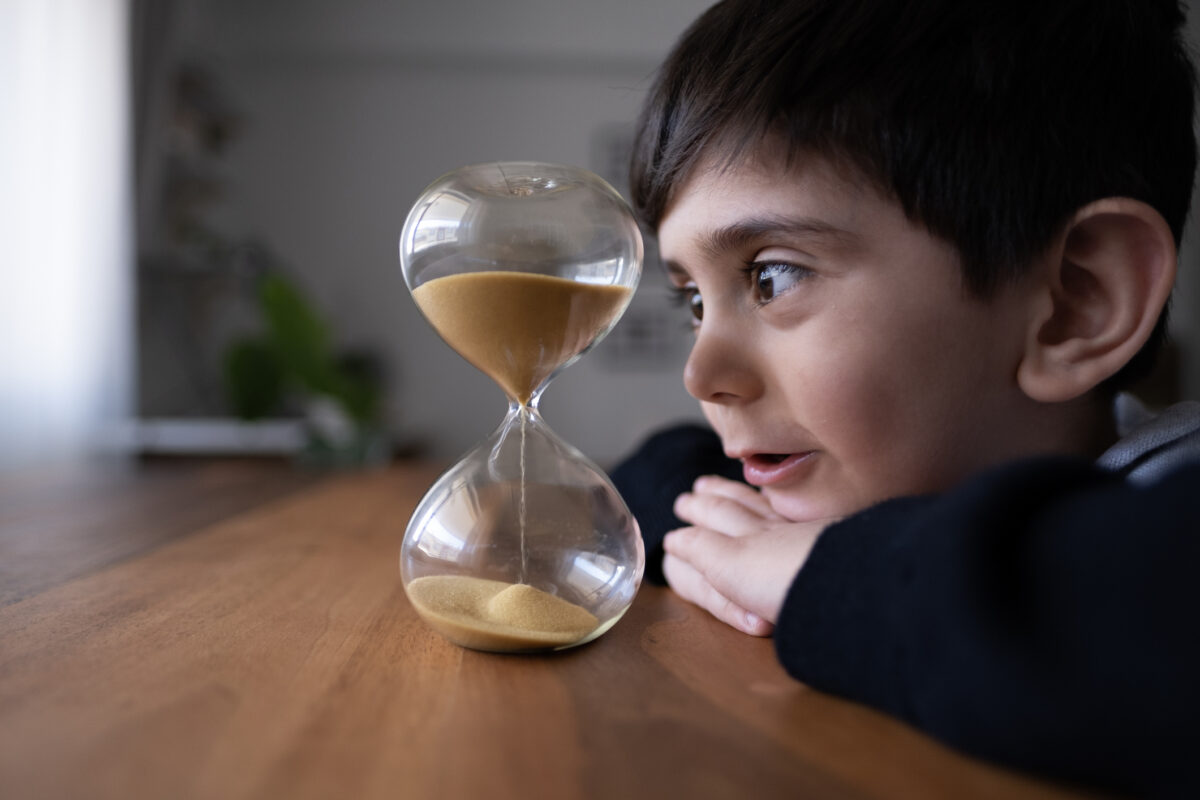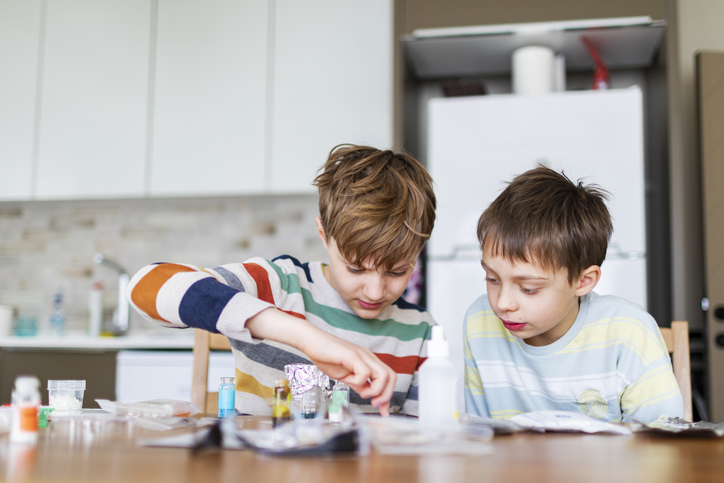Structuring Playtime with Toys and Objects
Letting your child initiate and direct play helps them to connect with you and other family members. To get started, watch your child as they approach a shelf or other area that has several toys. Which toy or other object do they reach for? Let that toy or other object be the focus of your play for the next 5, 10, or 15 minutes, until your child is showing signs that they are bored or signs that they are more interested in a different activity.
As your child gravitates towards a toy, name it. For example, if your child approaches a container of bubbles, you might say, “Oh, you want bubbles!” Blow a few bubbles and allow your child to pop or chase them. When the bubbles have popped, pause and wait for your child to initiate wanting more. This might look like eye contact, pointing, exchanging a picture of the item, sign language, or them trying to say an approximation for “bubbles”.
Hold onto the container of the bubbles, so that your child is motivated to connect with you in order for you to make more bubbles appear. For as long as your child remains motivated, you can use the bubbles to extend your child’s language and imitation skills. What are some fun, silly things that you can do with bubbles? Could you model catching them on a spoon? How about blowing them up high or down low? Each time you change the activity with the item, you create an opportunity to practice new skills, such as requesting “high” or “low” or imitating actions with the object.
Connecting through Activity-Based Play
Not all play requires toys or objects. Think about games that you played as a young child – Ring Around the Rosy and Peek-A-Boo are a couple of examples of interactive games that require no objects. These activities, which require multiple people and build excitement off of anticipating the next step, offer wonderful opportunities for building a child’s shared attention, language, and imitation skills.
Let’s take “Ring Around the Rosy” as an example. The first time you play this game with your child, go through the full round of singing/movements. The next time, pause expectantly at various times and wait for your child to look at you before you continue to move/sing. If your child is learning to talk, you might pause until they vocalize an approximation for the next word. You might sing “Ring around the ____” and wait until your child makes an attempt at saying “Rosy”. As soon as they make an attempt, continue to sing/move in an animated way. You can try going slower or faster with this activity, providing your child with the opportunity to request slow or fast.
You might also try making up a movement routine. For instance, if you are standing in your living room, and your child starts to jump, you might imitate your child jumping. This may get your child’s attention. Once you have their attention, change your movement to encourage them to copy you. For instance, you might start to turn in a circle or reach up to the sky.
Takeaways
Playtime offers rich opportunities for building a child’s communication and social skills. Think about games, songs, and toys you loved as a child and see if you can introduce a few of them with your own little one as a way to build their skills. When you approach play as an enjoyable way to help your child learn and use new words and actions, you’ll likely find yourself as engaged and excited about playing as your child is!
Download our free printable toddler communication resource guide.
If you are looking for more quick tips on how to use ABA strategies at home visit our Youtube channel.
You can also find more articles on a variety of ABA strategies here.





